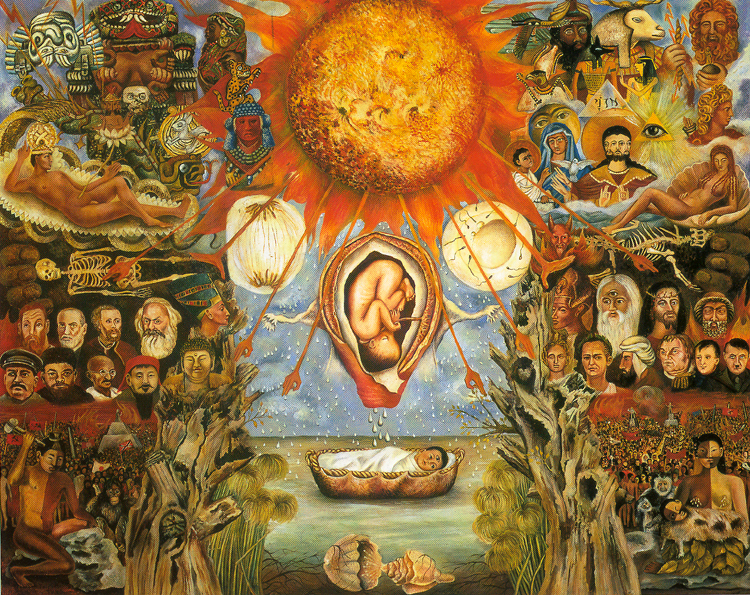
Frida Kahlo (15) |
 |
|---|
Source: Hayden Herrera, Frida Kahlo; the Paintings. New York: Perennial, 1991. Image: "Moses" (1945). Comments: In 1946, Frida Kahlo won the national prize for painting with this painting "Moses", which she painted the previous year. In 1946, and she underwent an operation on her spinal column. Throughout her life, Kahlo was deeply attached to nature in general, but especially to the maternal or life-giving literal and figurative female aspect related to nature. For this painting Kahlo was inspired, both by her own ideas and by Freud's book on Moses and Monotheism (1939). In this painting she achieves her most epic or monumental expressions of nature where the baby Moses is seen in the bottom center floating on the Nile river among the bullrushes where his mother Miriam had safely placed him to escape from Pharoah's wrath. This painting is arranged as a kind of triptych with pre-Columbian figures in the upper left, the roiling sun top center, and ancient Egyptian figures in the upper right. (Curiously, to me, the faces to the left and right of the foetus in the center are, as far as I can see, all male.) Humanities question: (A) In what way do you think this is a major artifact of Latin American humanities? (B) Mention a few (minimum of 4 excluding those mentioned in the Comments above) elements in the painting that most stand out to you; (C) What do you like about the painting and what--if you do--do you not like about the painting? |
|---|
 |
 |
|---|